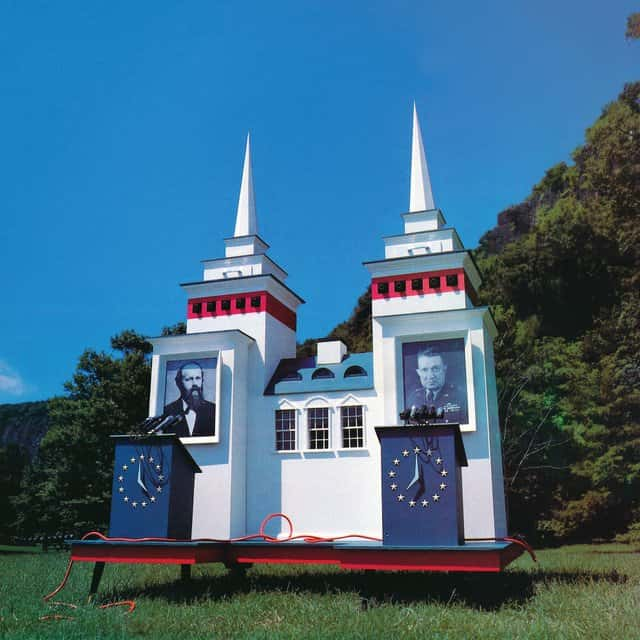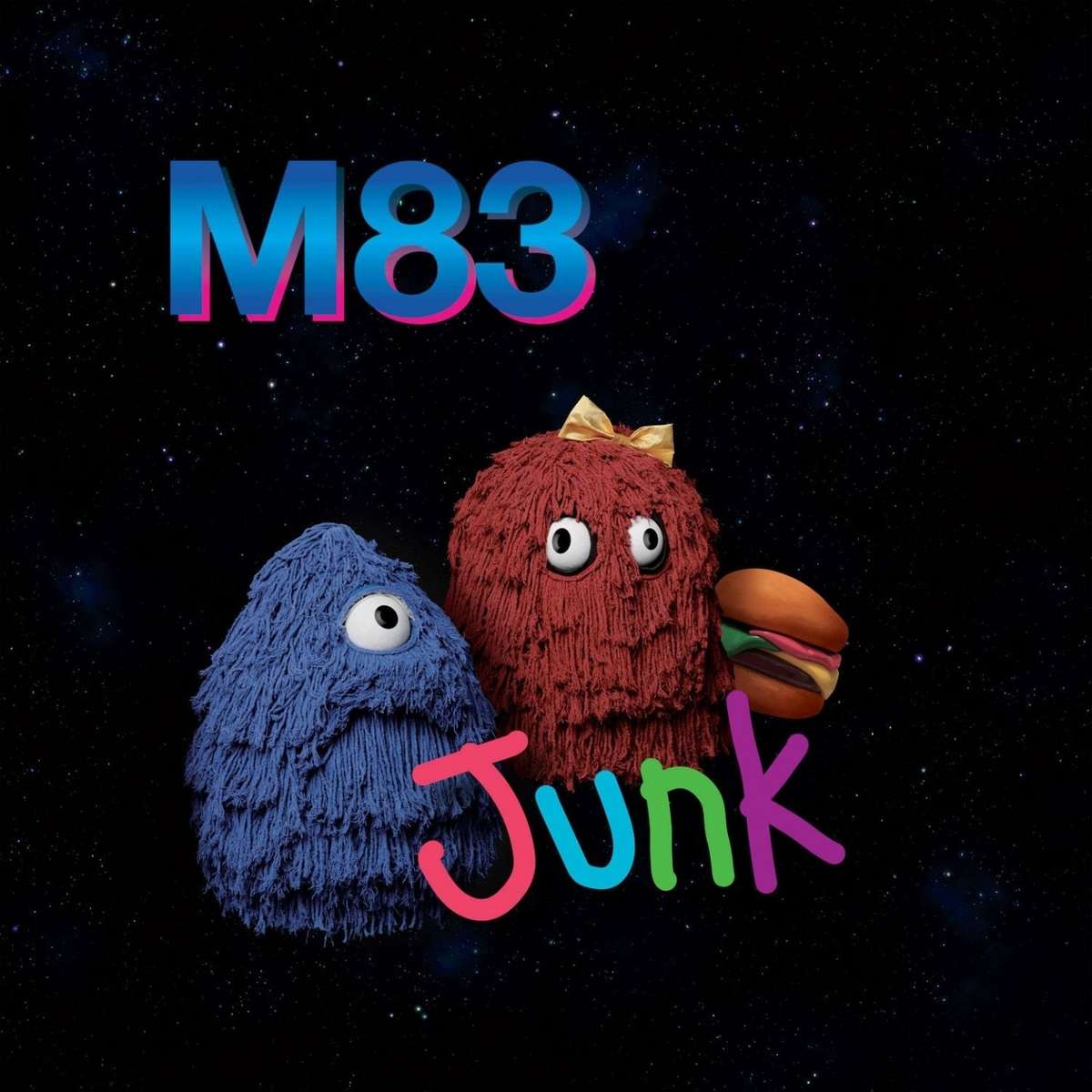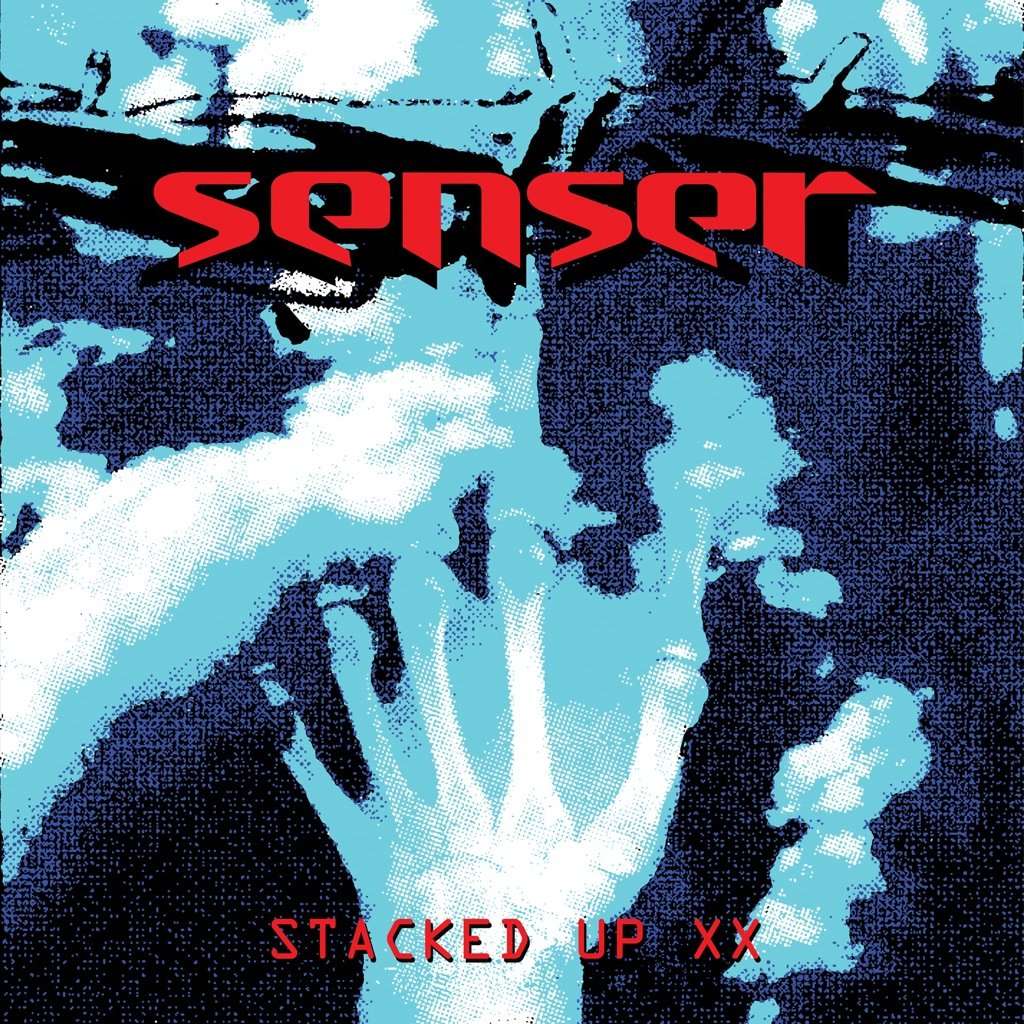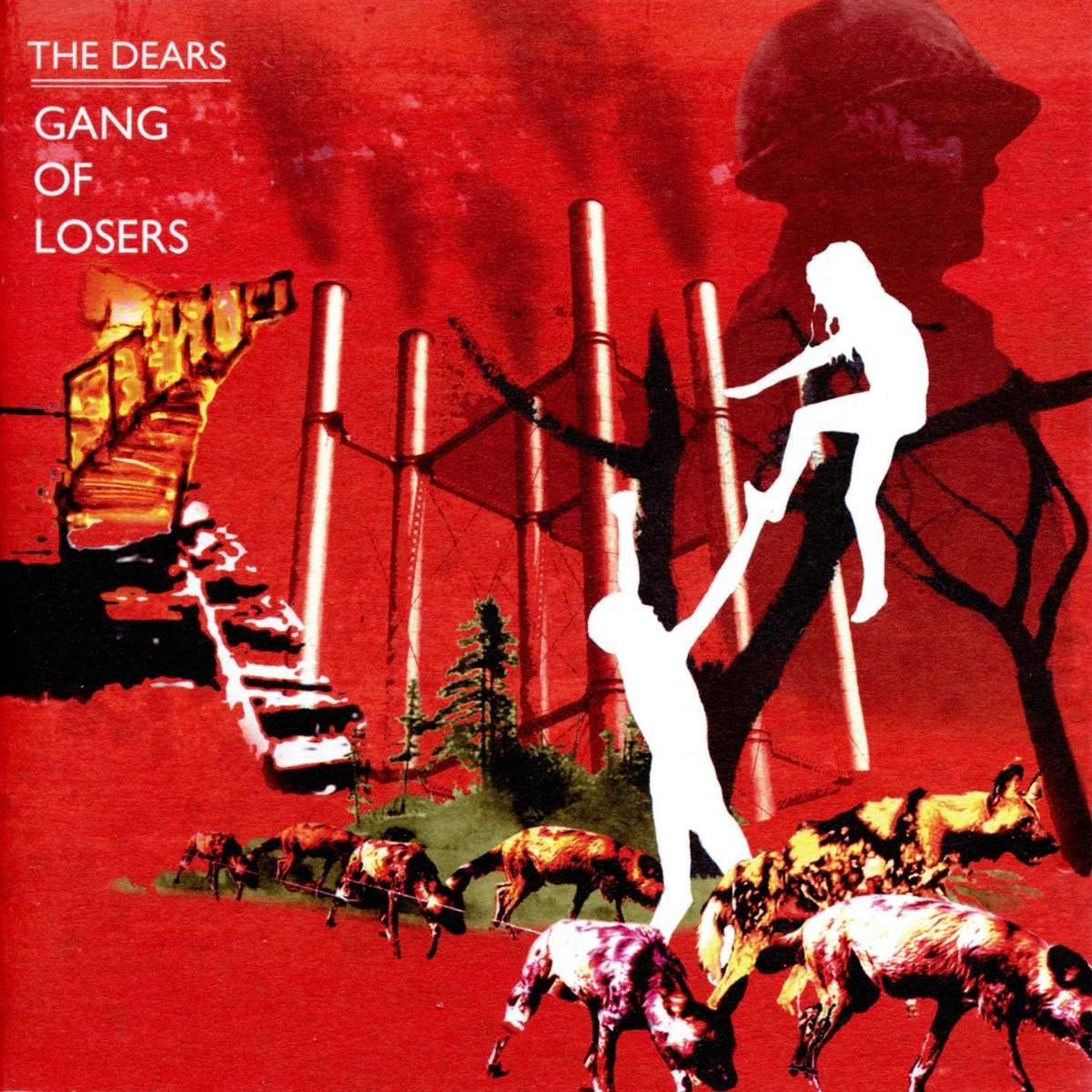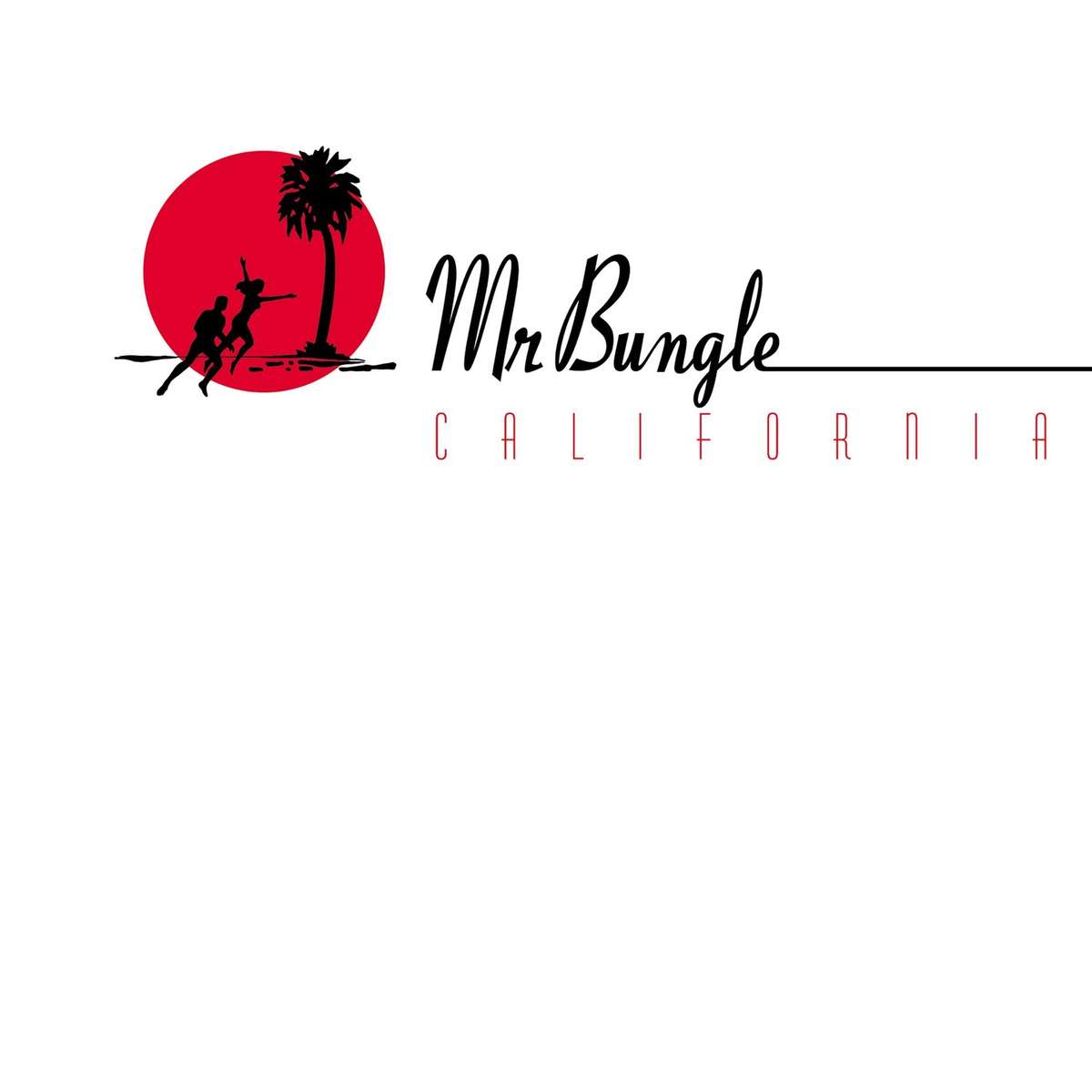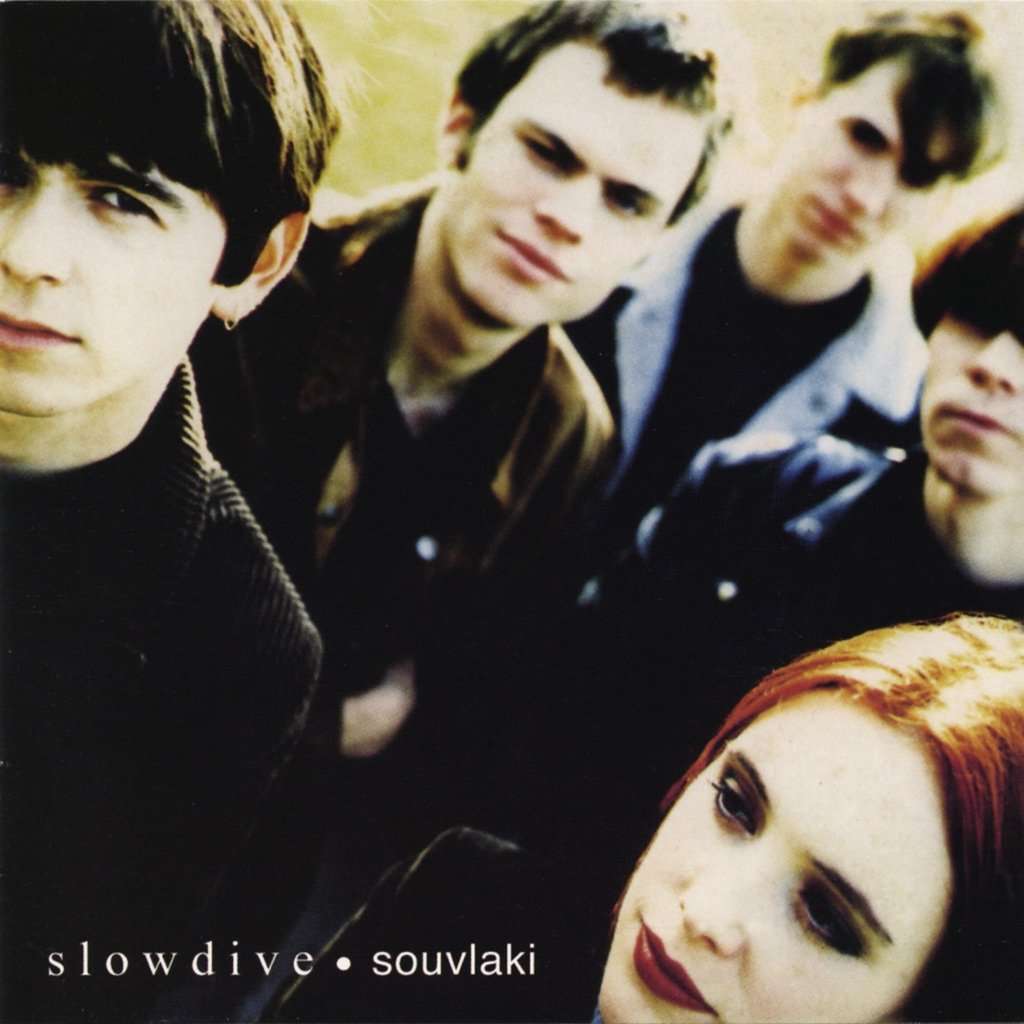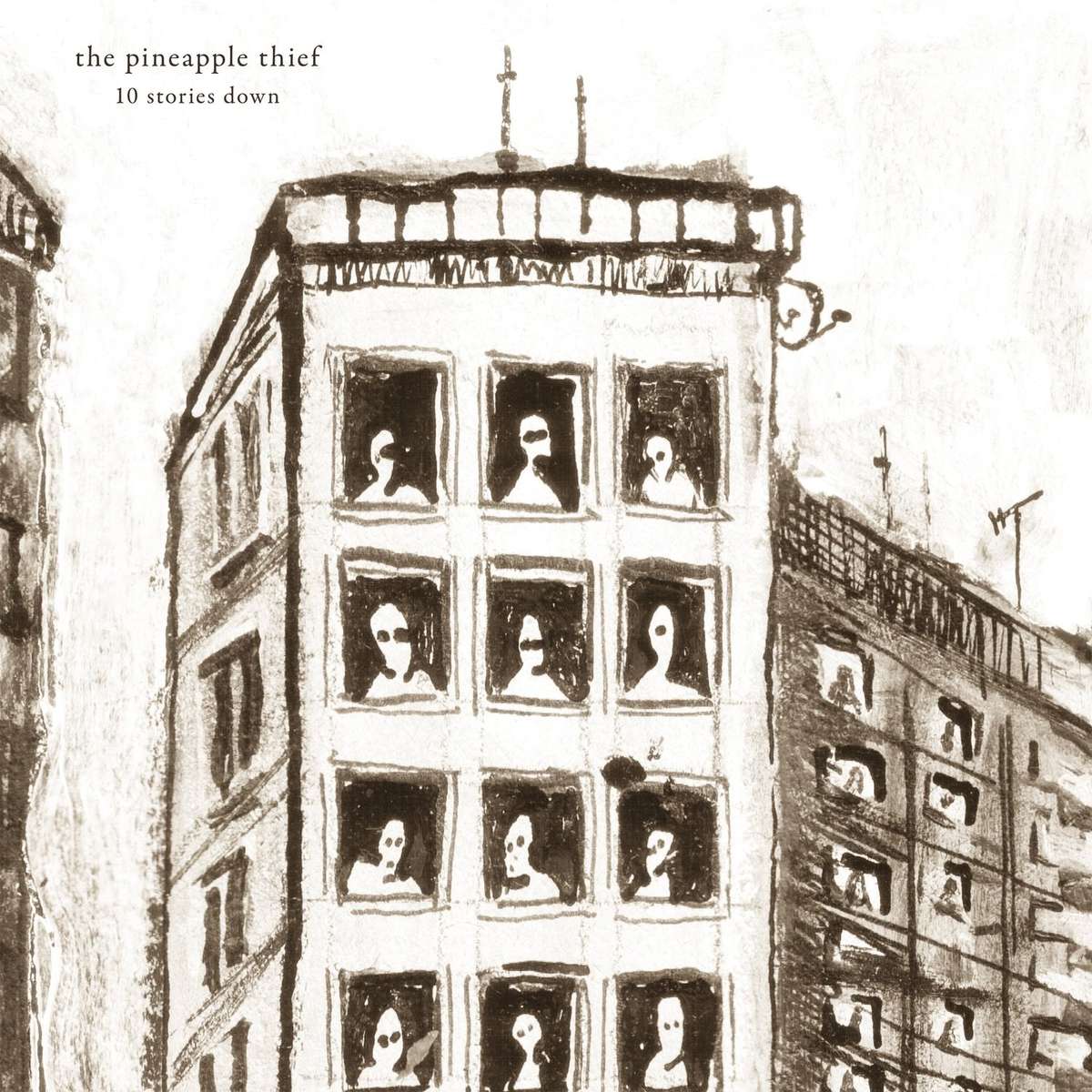A Musical Journey Through Eclectic Sounds and Surreal Visions
Lincoln 🎩
A Quirky Tribute to Hometown Heroes 🌆
In the late 1980s, as the indie rock scene was burgeoning, They Might Be Giants (TMBG) ventured into the musical landscape anew with their sophomore album, Lincoln, released in 1988. The title pays homage to the band’s longtime connection to Lincoln, Massachusetts—a nod to their roots that encapsulates the spirit of the album. This release not only solidified their unique sound but also marked a significant step in their artistic evolution. Its a cocktail of catchy melodies, clever lyrics, and a playful sense of whimsy that defined their early years.
The Sound of Innovation 🎧
One of the standout features of Lincoln is its innovative approach to sound and production. It was one of the early albums to embrace the use of sampling, layering, and mixing techniques that would later become staples in modern music. TMBG’s self-produced tracks often play with contrasting sonic elements—like the pairing of acoustic instruments against synthesized sounds. The experimentation on this album signaled a shift in the indie landscape while capturing the essence of late-80s American pop culture. Songs like Ana Ng and Birdhouse in Your Soul showcase not just catchy hooks but also unexpected arrangements that keep listeners guessing.
The Lyrics: A Lyrical Puzzle 🧩
TMBG is renowned for their quirky, offbeat storytelling, and Lincoln is no exception. The lyrics often dance on the edge of absurdity, weaving narratives that provoke thought as much as they entertain. Ana Ng, one of the albums highlights, tells the story of a yearning longing for a connection that is unrealized and distant, offering a melancholic contrast to its upbeat sound. The juxtaposition of lighthearted melodies with deeper themes is a hallmark of TMBG’s style, providing an engaging listening experience that encourages repeated plays.
Legacy and Influence ✨
Lincoln didnt just echo through the halls of their burgeoning fanbase; it left an indelible mark on the indie rock scene and influenced a new generation of musicians. Artists such as Ben Folds Five and The Decemberists have cited TMBG as a catalyst for their own work, embracing the quirky charm and melodic sensibilities present in this album. In a landscape saturated with grunge and glam rock during the late ’80s, TMBG carved out a niche that inspired the likes of Piafra and Weezer, who would soon follow in their footsteps—infusing humor with heartfelt lyrics.
Recording Anecdotes: The Real Deal 🎤
The recording of Lincoln sheds light on TMBGs dynamic as a band. They operated on a shoestring budget—a testament to the DIY ethic that characterized the indie music movement. Seeking authenticity, the duo recorded a number of tracks at their own home studio as well as in various locations around New York City. This approach not only added character to the album but allowed John Linnell and John Flansburgh to create an intimate atmosphere that resonates through the songs. Their earnest grit and determination define the albums spirit even decades later.
Cultural Context: More than Just an Album 🌍
Lincoln arrived at a time when the music industry was shifting. The late 80s saw the rise of alternative music, and TMBG emerged as trailblazers in a genre that blended humor with introspection, paving the way for accessibly unconventional music. As the album celebrates its legacy, it continues to resonate with lovers of both catchy pop and slightly more cerebral tunes. Its warm embrace of unconventionality invites listeners to step outside their comfort zones and appreciate the quirky nuances of life—something that remains increasingly relevant in today’s world.
The Fans: A Community of Enthusiasts 🎉
The cult following that TMBG cultivated around Lincoln must not be overlooked. Their fans—often characterized by a shared sense of curiosity and appreciation for the quirky—have helped keep the spirit of the album alive through countless covers, online discussions, and tribute shows. The interactive nature of TMBGs performances invites the audience into their whimsical world, binding together various generations of fans under the banner of clever wordplay and catchy choruses.
Conclusion: A Timeless Classic 📅
Lincoln stands the test of time not merely as an album but as a cultural artifact, capturing the playful yet poignant essence of the era in which it was created. TMBG’s knack for storytelling combined with their inventive sound presents a compelling case for continued relevance. This album is not just a celebration of an oddball duo; it is a love letter to the timelessness of creativity, inviting listeners to revel in the inexplicable and wholly beautiful human experience.
A Life of Surprises: The Best of Prefab Sprout 🎶
The Beginnings of a Pop Enigma 🌱
As the world shifted into the 1990s, music tastes began to evolve, with a newfound curiosity for sophisticated pop sounds laced with introspective lyricism. Enter Prefab Sprout, a band that defied easy categorization, weaving together threads of pop, rock, and even hints of electronic experimentation. Their compilation album, A Life of Surprises, released in July 1992, captures a key moment in their journey. It presents not just their most notable hits, but also the charming quirkiness that defined their oeuvre.
For fans and newcomers alike, this album serves as an enticing portal into the lush landscape conjured by frontman Paddy McAloon and his band. Prefab Sprout stood out in an era dominated by grunge and Britpop, not simply for their timeless melodies but also their unique storytelling approach, where each song invited listeners into lyrical vignettes filled with emotion and wit.
The Art of Compilation: More Than Just Hits 🎙️
Often considered mere collections of singles, compilation albums can lack the narrative drive found in a cohesive record. However, A Life of Surprises breathes life into this format by thoughtfully curating tracks that evoke the band’s artistic evolution. From When Love Breaks Down, with its lush orchestration, to The King of Rock N Roll, a wry commentary on celebrity culture, the album reveals the variety in Prefab Sprouts sound while showcasing McAloons intimate songwriting.
Interestingly, the album’s title, A Life of Surprises, symbolizes the unexpected journeys the band—and indeed, life itself—can take. This approach is reflected in track placements that challenge traditional expectations; for instance, the unexpected pairing of a jovial pop anthem with a heartfelt ballad, each unveiling a different facet of the human experience.
Sounds of the Future: Production Pioneers 🎚️
While A Life of Surprises may not boast the same notoriety as some contemporaneous albums, its production techniques deserve recognition. The eccentric layering of sounds, especially notable in tracks like Cars and Girls, reflects a keen understanding of studio technology that was emerging at the time. Produced by the legendary Thomas Dolby—a name synonymous with 80s innovative synth sounds—the album confidently melds analog warmth with digital precision.
This creative partnership sowed the seeds for a sonic palette that synthesized genres, influencing later artists who sought to recreate that blend of introspective lyrics and inventive soundscapes. A decade later, artists like the Magnetic Fields and even Coldplay would draw upon the latters emotional resonance and rich production style.
The Cultural Tapestry: Contextual Revelations 🌍
The early 90s were an interesting time for music. As the Iron Curtain fell, societal norms began to shift, and so too did the music. Bands like Prefab Sprout provided a counter-narrative to the grunge explosion, offering melodies rich in narrative depth and emotional complexity. In the UK, while mainstream music leaned heavily towards the anthemic, Prefab Sprout reeled in an audience that sought something more cerebral.
This album becomes a cultural artifact, encapsulating a moment when listeners began to crave substance in their sound. Even today, amid a resurgence of 80s retro nostalgia, the charms of Prefab Sprout feel remarkably relevant. They remind us that pop music can be both a commercial entity and a profound form of art—an idea that resonates with today’s indie and alternative artists striving to innovate while paying homage to the past.
Fans and Legacy: The Journey Continues 🌟
Though the band might not have achieved the mainstream stardom of their contemporaries, they carved a loyal niche within the music community that persists today. A Life of Surprises remains a treasured collection for fans, simultaneously capturing the essence of the band and illuminating their everlasting impact. The willingness of artists like Elton John and the late Paul Young to publicly praise McAloon showcases a deep mutual respect resonating throughout the industry.
As Prefab Sprout ventures through the decades, they continue to surprise us—whether through unexpected new releases or tours that revive their mesmerizing charm. Their ability to adapt while preserving the classic elements that made them special speaks to the power of music as both a time capsule and a journey, forever inviting new listeners into their delightful world.
In conclusion, A Life of Surprises does more than compile tracks; it encapsulates a philosophy of joy, introspection, and innovation. Like life itself, it’s full of surprises waiting to be discovered. So push play and let the unexpected melodies whisk you away. 🎧✨
Junk by M83 🗑️
A Whimsical Voyage Through Sound 🎶
In the kaleidoscopic realm of electronic music, M83s album Junk stands as a seemingly paradoxical piece—a whimsical collection of sounds that wrestles with a unique identity while navigating through the intricate hallways of memory and nostalgia. Released in April 2016, this album is often described as a juxtaposition of jubilance and confusion, a sonic playground that reflects M83s Anthony Gonzalez in a particularly playful mood. But what truly makes Junk a standout work in M83s discography is its audacious experimentation and splendid disjointedness. 🌈
A Playful Rejection of Convention 🤹♂️
What’s interesting about Junk is that it embraces a sense of contradiction—a musical collage that some critics have likened to a befuddling mess, yet others hailed as an audacious celebration of sound. The album has moments that feel purposefully lightweight, almost as if Gonzalez aimed to capture the frenetic energy of an arcade or the erratic beats of an unexpected summer fair. Tracks like “Go!” and “Feel Good” radiate an exhilarating spirit, blending nostalgic synths with vibrant, poppy hooks that invite you to dance, even if the context might seem absurd at times. In Junk, Gonzalez has crafted soundscapes that oscillate between the synthetic and the organic, from airy instrumentals to bombastic anthems that demand your attention. 🎡
Musical Myths and Mashups 📜
Gonzalez crafts “Junk” not just as a personal expression but as a tribute to various musical influences that have colored his sonic palette. As he has noted in interviews, the albums title was inspired by everything from the leftover fragments of previous works to the forgotten trinkets of his childhood—an open-hearted nod to the idea that even junk can find beauty and coherence when pieced together thoughtfully. The eclectic mix invokes the sound of a forgotten sci-fi film from the ‘80s, juxtaposed with the modernity of pop cultures emulations. Songs such as “Bibo” could be seen as a cinematic score, evoking images of a hazy sunset over a retro-futuristic landscape, while “Go!” bursts forth like an explosion of confetti at a surreal birthday party. 🎈
Production as a Journey 🛤️
The production of Junk is yet another layer of its complexity. Gonzalez partnered with producer Morgan Kibby, diving into techniques that range from the avant-garde to the commercially accessible. The use of analog synthesizers, along with unexpected genres like disco and funk, evoke the luscious sounds of 1970s and 1980s pop while simultaneously pushing the boundaries of modern electronic music. This layering creates an atmosphere that feels both nostalgic and fresh, where sounds collide to evoke a feeling rather than a coherent narrative. It’s here that the joys of Junk lie—not in linear storytelling but in colorful sound fragments that arouse emotions from listeners. 🌌
A Mixed Legacy: Reception and Reflection 📈
Upon its release, Junk received mixed reviews, with some critics pointing to its disjointed nature as a shortcoming while others saw it as an innovative departure from the more introspective offerings of the earlier albums like Hurry Up, Were Dreaming. Fans were left to grapple with the albums eccentricities and its place in M83s evolving sound. Over time, however, Junk has found its niche, with dedicated listeners praising its quirky charm and unabashed creativity, carving out its own legacy within the M83 canon. 🎤
Conclusion: The Beauty of Junk 📖
Despite its mixed reception, Junk remains a unique artifact in the M83 discography. It captures a moment in time where playfulness and artistry intersect, embodying a spirit of liberation in a world often weighed down by seriousness. In this album, Gonzalez finds joy in the eclectic, celebrating both the mundane and the abstract—reminding us that sometimes, it’s not about the destination but the spectacular mess we make along the way. So let Junk spin through your speakers, and let it take you on a ride through laughter, reflection, and the unexpected. 🎊
Stacked Up 🎸
The Birth of an Enigma 🔥
In a time when grunge was getting gritty and hip-hop was rising, the UK music scene of the early ’90s was ripe for innovation. Enter Senser, a band that shook the very foundations of genre with their electrifying debut, Stacked Up. Released on May 2, 1994, this album burst forth like an uncontainable storm, crashing into the charts at No.4. But beyond its commercial success, Stacked Up was a sonic tapestry that wove elements of rap, rock, funk, and metal into something fierce and fresh.
A Sonic Fusion 🎤🎸
One of the defining characteristics of Stacked Up is its genre-bending prowess. Senser, consisting of members who were adept at both hip-hop and rock, encapsulated an era of musical experimentation. Their sound is often tagged as “rap-rock,” yet this label barely scratches the surface. Tracks like “Age of Panic” and “Switch” employ not just rapping but dynamic vocal interplay, harnessing the raw energy of punk and the hard-hitting rhythms of hip-hop. The guitars rip through the sonic landscape, while basslines groove with a funk-infused intensity, often catching the listener off guard with sudden tempo shifts.
This fusion wasnt just a trend; it was a declaration. Senser found their voice amid the cultural turbulence of the ‘90s, creating music that reflected the chaos of their times. We were angry and questioned everything around us, lead vocalist Kerstin Haigh reflected in interviews years later, capturing the ethos from which the band emerged.
The Alchemy of Production 🛠️
The production of Stacked Up is another underappreciated aspect of its legacy. Working with producer unearthly, the band experimented with layering and sampling in ways that predated some later conventions in electronic music. They used techniques inspired by hip-hop—like sampling urban sound bites and sonic collages—that invited the listener to feel the pulse of the streets. The result? A finely crafted chaotic tapestry of sound.
For example, the track “The Key” masterfully blends live instrumentation with sampled drum patterns, crafting an anthem of innovation that felt both organic and cutting-edge. The infusion of these techniques helped pave the way for later bands who would also seek to blend genres in the heavy landscapes of modern metal and rap genres.
A Cultural Refraction 💥
Stacked Up didn’t just reflect the musical zeitgeist; it engaged with the sociopolitical landscape of the time. The lyrics explored themes of alienation, media manipulation, and societal unrest—elements that resonated with a youth grappling with both international upheavals and local disillusionment. Their sound was a rebellion against complacency, a soundtrack for those who felt lost in an increasingly fragmented world.
In the context of the ‘90s, when many bands chose either nihilism or escapism, Senser pulled no punches. The album felt both urgent and relevant, leaving an impression that raised eyebrows among critics who were eager to pigeonhole them. It’s undeniable that Stacked Up was not just music; it was a voice for a generation.
Legacy and Influence 📈
The ripples of Stacked Up extended far beyond its immediate release, influencing a myriad of artists and subcultures that came after. While bands like Linkin Park and Rage Against the Machine may be more readily associated with the rap-rock genre, Senser’s early foray laid some of the groundwork for that sound. They opened the door for artists to experiment, blending influences in unorthodox ways that challenged traditional constraints.
Even today, generations of musicians cite Senser as a pivotal band that encouraged them to explore rhythms and melodies without restrictions. Their music has found new life through social media platforms, resonating with listeners who continue to discover the raw energy of Stacked Up.
A Journey Beyond the Music 🛤️
Reflecting on Stacked Up today evokes nostalgia but also admiration for the trailblazing spirit of Senser. Theyve embarked on new musical endeavors since the album’s release, growing as artists but never quite forgetting the raw essence that defined their debut. As they navigate the modern music landscape, the echoes of Stacked Up are never far behind—a testament to a band that shaped a genre and the cultural conversations surrounding it.
In the end, Stacked Up stands as a bright, albeit gritty, beacon on the timeline of music history, reminding us of the extraordinary power of creativity when it collides unabashedly with both art and life. It remains a celebration of the unexpected, an explosion of sound that taught us the beauty of being audaciously oneself. 🎉
Gang Of Losers 🎶
The Echoes of Montreal 🎤
In the mid-2000s, when the world felt a shift towards the indie music renaissance, Montreal’s own The Dears emerged as a sonic force, beautifully interweaving orchestral elements with melancholic lyrics. Their third album, Gang of Losers, released in 2006, stands as a poignant response to not only the bands journeys but also the backdrop of the music scene around them. Emerging from a vibrant Montreal ecosystem, which was bursting with creative energies, The Dears carved their niche amidst a wave of Britpop nostalgia, redefining their sound while continuously shrugging off comparisons to heroes like Morrissey or Blur.
An Album Born From Turmoil 💔
Underpinning Gang of Losers is a narrative of struggle and resilience. During the albums development, the band faced significant internal strife, grappling with lineup changes and personal relationships. Founding members Murray Lightburn and Natalia Yanchak navigated tumultuous waters, which would profoundly influence the emotional intensity threaded throughout the album. Their turbulent love story—not just romantic but profoundly creative—often soaked the music with an authenticity that resonates deeply. The result is a collection of tracks that pulsates with vulnerability, invoking raw emotions through the interplay of light and dark that characterizes the album’s essence.
Sonically Diverse, Lyrically Rich 🎼
Musically, Gang of Losers veers towards a cinematic landscape. Lightburn’s baritone provides a haunting yet captivating vocal experience, while Yanchak’s harmonies often act like a bright beacon cutting through the fog of despair surrounding the lyrics. The arrangement bears innovative instrumentation that melds rock, orchestral, and pop elements, guiding listeners through a gripping narrative arc. Tracks like You and I Are a Gang of Losers encapsulate the feeling of disconnection, yet laced with an almost anthemic quality that reflects a collective longing for belonging—something that resonated strongly within the indie scene of that era.
This creativity is echoed through slight touches of experimentation, notably in the song Money Babies, where the melancholic nature of indie rock meets provocative, upbeat rhythms, inviting listeners to dance even amidst the despair.
The Album’s Lasting Impact 🌍
While the band never reached the commercial heights of some contemporaries, Gang of Losers quietly left an indelible mark. For many, this album served as a guide through the emotional labyrinth of relationships and personal identity, striking a chord among other indie darlings like Arcade Fire and Wolf Parade, both of whom were flourishing in the Montreal music scene. Its texture and complexity influenced myriad newer artists who’d venture into the territories of heartache and nostalgia, paving pathways for bands to explore orchestral indie sounds with profound lyrics.
Critical Reception and Legacy 💬
Critically, Gang of Losers was met with enthusiasm. Publications like Pitchfork lauded its intricacies, not with comparisons to its predecessors but on its own terms—highlighting that The Dears were evolutionarily distinct in their approach. With songs dripping in sorrow yet infused with glimmers of hope, Gang of Losers spoke to listeners enduring their struggles, much like a warm embrace on a cold winter’s night.
Today, more than a decade later, echoes of Gang of Losers can be felt in the soundscape of modern indie music. The thematic recurrence of loss and longing continues to resonate deeply. Not only is this album an essential chapter in the narrative of The Dears, but it also stands as a timeless reflection of a generation wrestling with questions of identity and connection amidst stark realities.
As we revisit Gang of Losers, we remember the power of vulnerability in music and how it provides the soundtrack for our grief, joy, and everything in between—a reminder that sometimes, being a loser is just as powerful as being a winner.
Best of the Other Sides 🎶
A Treasure Trove of Rarities 🌟
When Kate Bush released The Other Sides in March 2019, it felt like unearthing a treasure chest filled with sonic jewels. This compilation, an audacious mosaic of B-sides, remixes, and previously unreleased tracks, represents a vital thread in the elaborate tapestry of Bushs prolific career. Known for her innovative artistry and genre-defying sound, Bush channels her profound emotionality through these ephemeral pieces that didn’t quite fit into her renowned studio albums.
Bush has always defied categorization, dabbing into niches of art rock, pop, and even the avant-garde. The allure of The Other Sides lies in its ability to provide a holistic view of her creative output beyond the chart-topping hits. This album illustrates how Bushs explorations in sound and lyrical complexity laid the groundwork for a myriad of contemporary artists, from Florence Welch to Bat for Lashes, who owe a debt to her theatricality and emotional vulnerability.
Unseen Connections: The Sound That Influences 🌌
Considering Bushs unique sound, its fascinating to see how The Other Sides unveils her inventive spirit in ways that collaborate with the burgeoning genres around her. The ethereal quality of “The Big Sky (12 Mix)” expands the song into a euphoric landscape, a clear precursor to the ambient synth explorations that would dominate the late 80s and early 90s. Meanwhile, songs like Running Up That Hill (A Deal with God)—though explored more deeply in its original form—find new nuances in their remixes, reminding us of the power of re-imagination in music.
As we delve into Bushs B-sides, it becomes evident that many of these songs blazed trails for future genres, particularly electronic and dream pop. The rhythmic complexity and melodrama of tracks like “The Other Side” echo the alt-pop offerings from artists such as Lana Del Rey and Björk. This intricate web of influence showcases Bush as an architect, shaping sounds and narratives that resonate through the decades.
Orchestration of Emotion: Songs as Sinfonias 🎼
Embodying the essence of her artistry, every track in this compilation tells its own story—a transformative experience akin to a theatrical production. Take the haunting “Hounds of Love” B-side, “The Morning Fog,” wherein Bush’s voice intertwines with lush instrumentation, creating an immersive atmosphere that transcends time and genre boundaries. It feels as if one is stepping through a mist-shrouded portal into Bushs realm, eliciting emotions that swirl between nostalgia and longing.
The layered production techniques used in these tracks are reflective of the 80s recording innovations, blending analog warmth with digital precision. This meticulous construction of sound elevates the listening experience, beckoning new audiences into the opulent world of Kate Bush’s artistry. Each track serves not just as music but as a window into Bushs psyche—a connection that fans crave and cherish deeply.
Fans Speak: Legacy and Reception ❤️
The release of The Other Sides met enthusiastic applause from die-hard fans and re-engaged newer listeners. In today’s social media landscape, fans took to platforms like Twitter and Instagram to share their love, discovering tracks that had previously slipped through the cracks. The vulnerability expressed in these lesser-known songs has constructed a bridge to the emotional complexities navigating both Bush’s early narratives and todays themes—about love, loss, and identity.
As fans dived into the compelling depths of the compilation, they rediscovered the profound impact Bush has had—not only within music but also in how we articulate our emotional landscapes. The Other Sides stands as a testament to her unparalleled influence and endurance in a constantly shifting musical climate.
Conclusion: A Journey Into the Uncharted 💫
Ultimately, The Best of the Other Sides serves not merely as another release, but rather as a journey into the fringe territories Bush often cultivated throughout her career. Each song captured within this collection is a reminder of the magic that thrives in her archives. As we listen, we are not just absorbing sound; we are partaking in an experience that whimsically blurs the lines between music, theater, and poetry, ultimately granting us permission to explore the other sides of our own emotional realities.
In an era where music often flirts with the ephemeral, The Other Sides encapsulates the essence of Kate Bushs fearless exploration and her endless ability to evoke feelings, making us believe that perhaps the best is yet to come.
California 🌴
A Kaleidoscopic Journey Through Sound 🎶
In the sprawling auditory landscape of the late 1990s, Mr. Bungle released California—an album that serves as both a sonic playground and a masterclass in genre-defying art. Released on July 13, 1999, this marked the bands third studio effort and came as a marked departure from their earlier chaotic expressions. The band, helmed by the eclectic Mike Patton, expertly blended elements of metal, jazz, funk, and ska, crafting a sound uniquely their own—a sonic collage that defied the music norms of the time.
The Ambitious Tapestry of Tracks 🧶
California isn’t just an album; it’s a narrative woven through its 11 tracks, each a vignette that dances around the concept of the Californian dream and its disillusionment. The album kicks off with Sweet Charity, which, with its sun-soaked melodies juxtaposed by bittersweet lyrics, invites the listener into a whimsical yet haunting reality. The true essence of California lies in its ability to meld disparate sounds into a cohesive whole. From the surf-rock vibes in “None of Them Knew They Were Robots” to the eerie, almost cinematic atmosphere of “The Air-Conditioned Nightmare,” every song is a unique twist on the bands broad palette.
Behind the Curtain: Recording Magic 🎤
Recorded in Northern California, a region synonymous with creative experimentation, the albums sessions were characterized by a loose and joyful spirit. Interestingly, much of the songwriting was done collectively yet individually, allowing each members distinct influences—a practice that reflects the collaborative ethos that permeated the band. In the words of bassist Trevor Dunn, “We brought things to the table that somehow coalesced without premeditation.” This organic fusion resulted in tracks that are not just songs but an experience of unpredictability, echoing both the sunny allure and underlying darkness of California itself.
An Influence on the Underground Scene 🎤
Upon its release, California captivated a select audience, earning praise for its craftsmanship, but it did not quite penetrate the mainstream. However, its legacy would ripple outwards over the following years, influencing numerous artists across various genres. Bands like The Mars Volta and Between the Buried and Me have cited Mr. Bungle’s experimental approach as a critical influence on their own work, blending progressive rock, metal, and avant-garde aesthetics. The album became a touchstone for those exploring the boundaries of genre—essentially laying breadcrumbs for future artists who dared to venture into the unknown.
The Ephemeral California Dream 🌊
As much as the album plays with whimsical sounds and playful lyrics, it also delves into the darker undercurrents of American culture. The track “The Air-Conditioned Nightmare” encapsulates this duality; a slick, pristine facade hides the uncomfortable truths lurking beneath the surface. It illuminates the disillusionment that often accompanies the concept of the “California Dream”—the allure of sunshine and glamour colliding with stark realizations of reality.
Musical Playgrounds and Cultural Backdrops 🎡
Recorded with renowned producer Jacoby E. Eagar, the album took shape in a variety of settings—from rehearsal studios in Orange County to recording endeavors in San Francisco. These environments, brimming with eclectic influences, infused the album with a sense of place, capturing the essence of Californias multifaceted character. Each layer is a testament to the bands experimentation, employing methods like editing live recordings and using unconventional instrumentation. Such approaches mirrored the chaotic, vibrant energy bubbling beneath Californias surface in the late ’90s, further reinforcing the albums cultural resonance.
A Lasting Legacy 🎤📜
Years after its release, California remains a cult classic, appreciated by fans old and new for its adventurous spirit. It offers both a gateway and a labyrinth—a listening experience that challenges the ears while tickling the mind. As we move further into a world increasingly defined by genre blending and experimentation, Mr. Bungle’s masterpiece stands as a testament to the irreverent creativity that the band championed. So, whether you’re revisiting this album for a nostalgic dive into the late ’90s or discovering it for the first time, prepare to lose yourself in a soundscape as rich and contradictory as the Golden State itself.
Souvlaki 🌌
A Dream Beneath the Surface 🌊
Released on May 17, 1993, Souvlaki marked a pivotal moment for Slowdive, the enigmatic shoegaze band that emerged from the sleepy English town of Reading. At a time when grunge was capturing the airwaves, Slowdive created an ethereal soundscape that felt like a serene escape from the chaos surrounding them. The album’s embrace of melancholy and beauty resonated deeply, drawing listeners into a dreamy world defined by haunting vocals and swirling guitars.
But the magic of Souvlaki runs deeper than its sonic landscape. The album weaves a tapestry of personal narratives and shared experiences, infused with the youthful angst that characterized the early 90s. Songs like Alison and Machine Gun are not simply tracks; they are emotional portals, inviting listeners to experience intimacy through sound as a form of escapism. Rachel Goswell’s ethereal vocals float delicately over Neil Halstead’s intricate guitar lines, creating a lush sound that felt sophisticated yet approachable.
Recording in Unconventional Spaces 🏭
The recording of Souvlaki was a journey in itself. Unlike many albums of its era, which were often produced in polished studios, Slowdive recorded much of this masterpiece in a world barely touched by artificial enhancement. The sessions predominantly took place in a dilapidated warehouse in the suburbs of London, a space that unintentionally imbued the album with an otherworldly aura. This gritty environment allowed for a rawness that permeated the tracks, blending urban disarray with the tranquil introspection found in their music.
Furthermore, the infamous “Souvlaki Space Station”—a track that stands as an embodiment of the band’s shoegaze aesthetics—was inspired by a fleeting glimpse into a sci-fi future. The creation of this particular song stemmed from Halstead’s fascination with new-age technology and a yearning for cosmic exploration. Listening to it feels like a voyage through space and time, where fleeting images and emotions collide in a celestial dance.
The Cultural Context of Souvlakis Release 🌍
In the early 90s, the music scene was dominated by grunge and Britpop, genres that often overshadowed the ethereal sounds of shoegaze. Souvlaki was initially met with mixed reviews, as critics struggled to categorize the band within emerging musical trends. Yet, unbeknownst to many, Slowdive’s sound was quietly influential, paving the way for a resurgence of contemplative music in the years that followed.
As the years rolled on, Souvlaki began to blossom into a cult classic. Bands such as Radiohead and The xx have cited Slowdive as an influence in their work, clearly inheriting that same emotive landscape crafted by their predecessors. By the album’s 25th anniversary, it was being heralded for its renewed relevance, celebrated not just for its nostalgia but for its timeless exploration of love, loss, and existential reflection.
The Fan Phenomenon 💖
Slowdives cult following also reflects a deep connection forged between the band and its listeners. Fans discovered the band’s music almost as if uncovering a secret treasure, with Souvlaki becoming a rite of passage for many young music enthusiasts. Over the years, concertgoers would revel in the atmospheric soundscapes while often lost in their thoughts—a euphoric, communal experience that felt uniquely personal.
Moreover, the band’s reunion tour in the mid-2010s saw an almost cinematic revival of their artistry, with young fans mingling with those who discovered them decades earlier. This intergenerational bonding highlighted the albums lasting impact and illustrated how Souvlaki transcended its original context, speaking to coming-of-age narratives across different eras.
The Legacy of Souvlaki 🌟
In retrospect, Souvlaki stands as more than just an album; it represents an era of sonic experimentation and emotional exploration. The lush textures and dreamy landscapes continue to inspire a new generation of artists and listeners, with its influence resonating through the contemporary indie and alternative scenes. Slowdives ability to encapsulate profound feelings within ornate soundscapes paved the way for artists to explore similar territories of expression.
Whether viewed through the lens of its unique recording conditions, its place within cultural movements, or its undeniable emotional depth, Souvlaki remains a beacon of creativity and authenticity in music history. As the echoes of its haunting melodies linger, it invites listeners to continually explore the delicate balance between reality and the dreamlike—an invitation that endures, perhaps, as long as the stars shine above. ✨
10 Stories Down 📖
A Sonic Journey to New Heights 🌄
In the vibrant tapestry of the mid-2000s alternative and progressive rock scene, The Pineapple Thief carved out a niche that was both emblematic of the genres renaissance and deeply personal. Their fourth studio album, 10 Stories Down, released in June 2005, represents a turning point—not just for the band, but for frontman Bruce Soord, who ventured from a solo project into a collaborative force, showcasing a richer, more expansive sound. 🎶
The Alchemy of Sound: Production Insights 🛠️
10 Stories Down is particularly noteworthy for its innovative approach to production. Recorded in a nearly DIY style, Bruce Soord took the reins as both the mastermind and the craftsman. Drawing from an extensive palette of sounds, the album features lush soundscapes where melancholic melodies and soaring instrumentals intertwine seamlessly. Bruce utilized an assortment of unique recording techniques, from layering sounds in unconventional ways to experimenting with acoustic and electric combinations that brought a fresh feel to the progressive rock genre. ⚡️
One intriguing aspect of the production was the collaboration with engineer Steve Kitsch, who added an instrumental complexity that mirrors the albums thematic depth. Together, they captured the essence of the band’s musical DNA, allowing 10 Stories Down to emerge as an emotive exploration that resonated with listeners.
Stories Weaving Reality and Fiction 📚
While the title may suggest a descent into cumbersome narratives, 10 Stories Down plays with the concept of storytelling—each song an encapsulation of moments, emotions, and perhaps even memories that feel both intimate and universal. The lyrics, particularly in tracks like “My Debt to You,” invite listeners to reflect on their own experiences of love, loss, and remorse. These narratives unfold with the haunting backing of the band’s rich instrumentation, echoing the essence of life’s delicate balance between happiness and sorrow.
This interplay of biographies and relationships resonates profoundly, allowing listeners to find their own tales reflected in the music. In an era where storytelling was essential to the artistry, The Pineapple Thief masterfully blended fiction with the rawness of lived experiences.
Cultural Resonance: Echoes of the Past and Present 🌍
Released at a time when musical landscapes were shifting dramatically—traditional rock was being interwoven with electronic elements and various experimental genres—10 Stories Down stands as a bridge connecting the nostalgia of classic rock with contemporary sensibilities. The progressive rock echoes from the 70s are evident in tracks like “In the Last Hour,” which pays homage to rock legends, while simultaneously introducing innovative sounds that are quintessentially modern.
As society grappled with the uncertainties of the burgeoning digital age, the album’s themes of introspection and existential questioning were particularly relevant, facilitating connections with a generation on the brink of transformation. The Pineapple Thief became heralds of a new wave, shaping the sound of upcoming artists across genres—from post-rock to ambient music—who sought depth and complexity within their compositions. 🎧
Legacy and Reception: Planting the Seeds 🌱
Upon its release, 10 Stories Down was met with both critical acclaim and a devoted fan response. Emerging from the shadows of an underground scene, the album caught the attention of listeners who craved depth—a rarity during an era characterized by commercialism in music. The songs served as a portal to meaningful dialogue, fostering a sense of community among fans who shared their interpretations and connections to the emotional narratives crafted by Soord and the band.
Today, 10 Stories Down continues to hold a special place not only in The Pineapple Thief’s discography but also in the hearts of listeners who appreciate the nuanced storytelling woven with musicality. It’s celebrated not just as an album but as a pivotal moment in the evolution of modern progressive rock, inspiring subsequent generations of musicians to dig deeper into their craft and embrace the messiness of human experience.
Conclusion: A Continuous Exploration 🚀
As we journey further into the future of music, 10 Stories Down serves as a reminder of the power of vulnerability and creativity. The Pineapple Thief invites us to continually rediscover our own stories hidden in the melodies and lyrics, encouraging the exploration of personal truths within a broader cultural narrative. In a world overflowing with sound, this album—a blend of artistry, innovation, and emotion—stands timeless, echoing the sentiment that in every story told, there is a piece of our own humanity. 🌌
Top Artists (Week 45)
- They Might Be Giants (18 plays)
- Prefab Sprout (16 plays)
- M83 (15 plays)
- Senser (13 plays)
- The Dears (12 plays)
- Kate Bush (11 plays)
- Mr. Bungle (11 plays)
- Slowdive (10 plays)
- The Pineapple Thief (10 plays)

